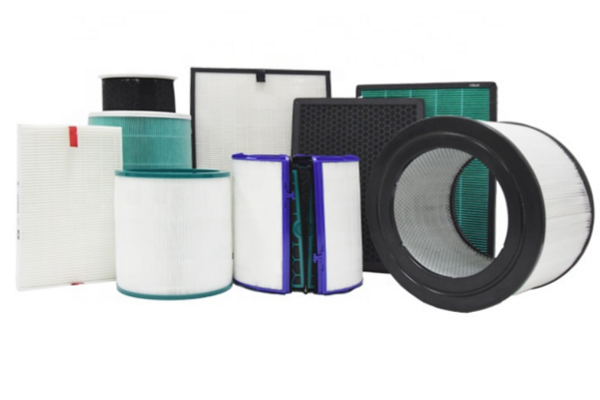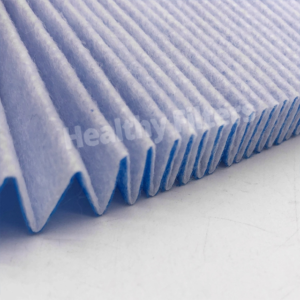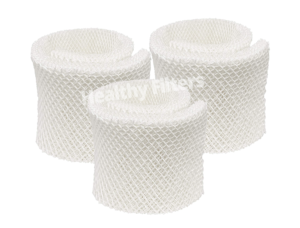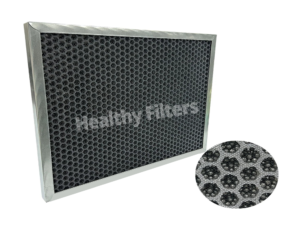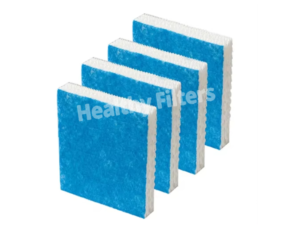HEPA filter is the core component of air purification system to intercept ultrafine particles (such as PM0.3, viruses, bacteria, pollen, dust mites), which complies with EN 1822 H13-H14 or ISO 16890 ePM1 99.95%-99.995% standards. With its ultra-high efficiency filtration ability, it has become the first choice for combating air pollution in home, medical and industrial environments.
Core functions and technical features
High-efficiency filtration mechanism
Physical interception: Through the dense mesh structure of ultrafine glass fiber or electret polyester fiber (pore size 0.3-10μm), particles are captured by inertial collision, direct interception and diffusion effect;
Electrostatic adsorption: The electret treatment gives the fiber electrostatic force, which enhances the adsorption capacity of 0.1μm particles (such as virus aerosols).
Multi-layer composite structure
Gradient density design: outer coarse fiber intercepts large particles, inner ultra-fine fiber captures sub-micron particles, dust holding capacity reaches 80-300g/m²;
Sealing frame: ABS or aluminum frame, combined with polyurethane sealant, leakage rate ≤0.01% (ISO 14644-1 Class 5 standard).
Core performance parameters
Parameters Performance indicators
Filtration efficiency 0.3μm particle interception rate ≥99.97% (H13) to ≥99.995% (H14)
Initial pressure difference ≤150Pa (@ rated air volume), silent operation (≤35dB)
Applicable area 20-150㎡ (CADR value 300-800m³/h)
Service life 12-24 months (average daily use 8 hours, medium and low pollution load)
Environmental tolerance Temperature -30℃~80℃, humidity ≤85% RH (mildew-proof model optional)
Five core advantages
Ultimate purification:
The interception efficiency of PM0.3, viruses (such as influenza virus, new coronavirus carrier), and allergens (dust mites, pollen) is ≥99.97%, protecting respiratory health.
Silent energy saving:
Low wind resistance design + brushless motor adaptation, energy consumption is reduced by 20%, and the noise in night mode is as low as 25dB (A).
Safety and environmental protection: No ozone release, FDA (medical) and RoHS (no hazardous substances) certification, some models use recyclable materials.
Intelligent adaptation: Support APP linkage, real-time monitoring of filter life (pressure difference/timing dual-mode reminder), automatic adjustment of wind speed.
Wide compatibility: Adapt to mainstream home, car, and commercial purifiers (thickness 20-100mm), modular quick-install design.
Typical application scenarios
Family health:
Residences for people with allergies: remove dust mites and pet dander, relieve asthma and rhinitis symptoms;
Mother and baby room: intercept PM0.1 and bacteria to create a sterile breathing environment.
Medical and office:
Hospital clinics, PCR laboratories: control microbial aerosols and reduce the risk of cross-infection;
Open offices: filter printer dust and PM2.5 to improve work efficiency.
Industry and transportation:
Electronic dust-free workshop: prevent 0.3μm metal dust from contaminating precision components;
New energy vehicle cabin purification: remove exhaust particles and odors in the car.
Selection and maintenance guide
Selection recommendations
By pollution type:
Viruses/bacteria: select H14 grade + antibacterial coating (silver ions);
Pollen/PM2.5: H13 grade + electret polyester fiber (low resistance and high efficiency).
Adaptation by area:
Small space (≤30㎡): CADR value 300-400m³/h, thickness 30-50mm;
Large space (≥80㎡): CADR value 600-800m³/h, thickness 80-100mm.
Maintenance strategy
Replacement signal:
Purification efficiency decreases (PM2.5 value rises);
Filter element turns black or pressure difference ≥ 2 times the initial value (about 300Pa).
Cleaning tips:
Cannot be washed: Surface dust can be gently sucked with a vacuum cleaner to avoid damaging the fiber structure;
Regular pre-filtration: Use G4 pre-filter to extend the life of HEPA by more than 50%.
Technological innovation and trends
Nanofiber composite: 0.1μm nanofiber layer on the surface, PM0.1 interception rate increased to 99.99%;
Intelligent regeneration: UV-C photocatalytic coating, regular irradiation restores some filtration performance;
Carbon neutral design: bio-based PLA fiber filter material, carbon footprint reduced by 30%.
HEPA filter redefines the air cleanliness standard with “ultra-fine purification, long-lasting durability, and intelligent interconnection”, becoming a technological barrier against pollution in modern life. From home to operating room, it injects purity and peace of mind into every breath with efficiency and reliability.

